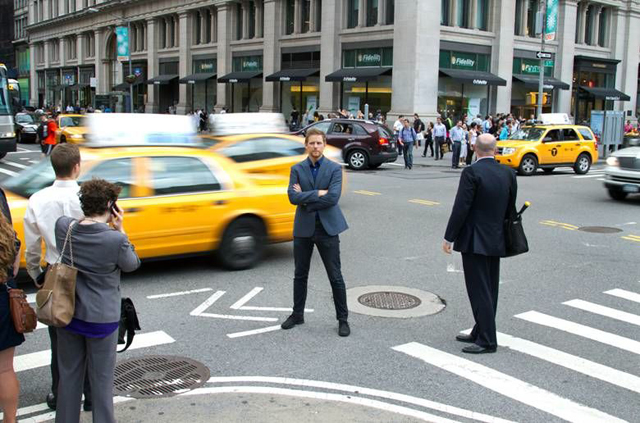Choosing the Happy City: Q & A with Charles Montgomery
Choosing the Happy City: Q & A with Charles Montgomery

Photo courtesy Lee Satkowski
As we’re getting closer to the lecture Choosing the Happy City on March 26 at SFU Woodwards, I had a pleasure to talk to Charles Montgomery, the author of the book Happy City and the speaker at the lecture. Charles is a passionate and engaging speaker, and here he explains why he dedicated five years of life to find out how cities can improve happiness of people who live in them.
What inspired you to write the Happy City?
It started with a bike ride through Bogota, Colombia, chasing the mayor who had used that unhappy city as a testing ground for his ideas on happiness. Enrique Peñalosa insisted that by transforming the form and systems of his impoverished and violent city, he had made citizens happier.
So, the bike ride through Bogota led to you start your five-year long exploration of happiness and cities?
That experience in Bogota posited a question; could a city really be redesigned to build happiness?
It was a thrilling idea, but I was skeptical. So, I set out to test it against science and evidence from other cities. The quest led me to the doorsteps of neuroscientists, psychologists, behavioral economists and activists, as well as sites of remarkable urban transformation around the world.
What connection between urban design and happiness did you find?
To paraphrase Winston Churchill, we shape our cities, and then they shape us. Buildings, roads and other city systems alter how we move, where we pause, how much spare time and money we have, and how we interact with and regard other people.
Good relationships, physical health, and social trust—all of these are key ingredients of happiness. By understanding these effects, we can reconfigure our cities and our lives to be healthier, happier and more resilient.
How can transportation help build happy cities?
We know that social relationships are the most powerful ingredient of happiness. So it’s crucial that we build systems that help us connect with other people in the city easily–and get us home in time for dinner with the people we love. Relying only on private cars won’t achieve that.
What’s the place that make you happy and why?
My happy place? Granville and Georgia at rush hour. The tide of people pouring out of the Canada Line station give the corner a thrilling sense of life and possibility.
What can regular people do to build urban happiness?
We need to understand the effect that city systems have on our emotions and behavior. We need to demand cities that reward us rather than punishing us for making healthy, more efficient choices.
Do you have examples?
In Davis, California a couple convinced all their neighbors to tear down their backyard fences so they could all enjoy a giant shared garden—and ended up with a finely-tunable device for sociability.
In Brooklyn, a man angered by honking horns outside his window went from throwing eggs at drivers to altering the way his city’s traffic lights worked. His work launched a movement that would lead to the renovation of the entire city, and pedestrianisation of Times Square.
None of them were thinking about the science of happiness. But they proved that we all have the right and the power to fix our cities.
What about the rest of us? What about the people who don’t have aspirations to change the system?
You can boost your happiness just by changing your relationship with the urban system. For some people, this means changing where you live, or how you move. For others, the answer lies in understanding the city’s invisible emotional systems, and consciously altering your response to them. I hope Happy City will help.
To hear more about the Happy City, come to the lecture on March 26. Admission is FREE but you have to register. RSVP here.
Did you know that you can enter a Happy City contest to win some great prizes? Spoiler alert: all it takes is a selfie! Check it out here.
Author: Borjana Slipicevic





